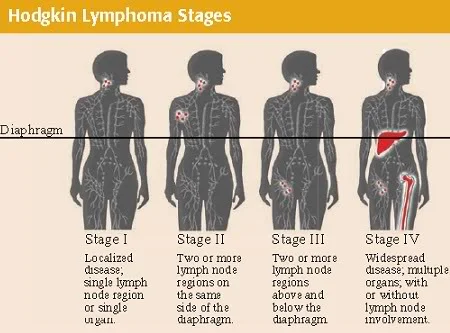Stages of non-Hodgkin’s lymphoma
/Non-Hodgkin’s lymphoma is staged in order to help to determine where the disease is located, if or where it has spread, and whether it is affecting other parts of the body. Diagnostic tests are used to determine the stage of the cancer. Diagnostic tests to stage non-Hodgkin’s lymphoma include a biopsy to remove a sample of lymph tissue or a biopsy to look for cancer cells in the bone marrow. Determining the stage of the cancer helps figure out which type of treatment is the best option. It can also help predict a patient’s prognosis.
There are a few different things a doctor must evaluate when staging non-Hodgkin’s lymphoma. This includes the number of cancerous lymph node areas, the location of the cancerous lymph nodes (whether the cancer is local aka in the same area the cancer started, or distant aka in other parts of the body), whether the cancerous lymph nodes are on one or both sides of the diaphragm, the thin muscle under the lungs and heart that separates the chest from the abdomen, and whether the disease has spread to the bone marrow, spleen, or to external lymphatic organs that are not part of the lymphatic system, such as the liver, lungs, or brain.
There are four different stages of non-Hodgkin’s lymphoma: Stage I, Stage II, Stage III, or Stage IV. The four stages each describe how much the cancer has metastasized, or spread. While stage IV is the worst and most advanced stage, it can be highly treatable in some cases.
Stage I: Cancer is present in one lymph node region, or the cancer has invaded one extra-lymphatic organ or site but not any lymph node regions.
Stage II: Cancer is present in two or more lymph node regions on the same side of the diaphragm, or the cancer involves a single organ and its regional lymph nodes, with or without cancer in other lymph node regions on the same side of the diaphragm.
Stage III: Cancer is present in the lymph node areas on both sides of the diaphragm.
Stage IV: The cancer has metastasized, or spread, throughout the body beyond the lymph nodes.
Lymphoma most often spreads to the liver, bone marrow, or lungs. Although Stage III and Stage IV lymphomas are more advanced, they are still common and can be highly treatable. And while Stage III and IV are listed as separate, they are now often considered one category because the treatment and prognosis for both of these stages are generally the same.

